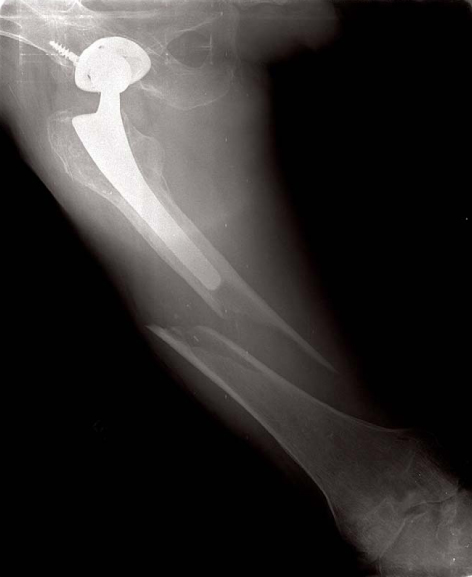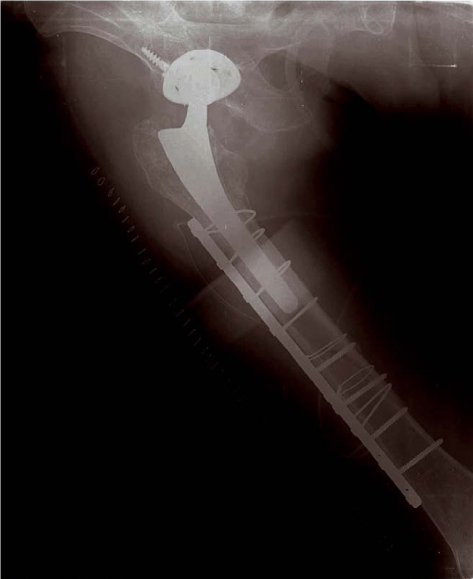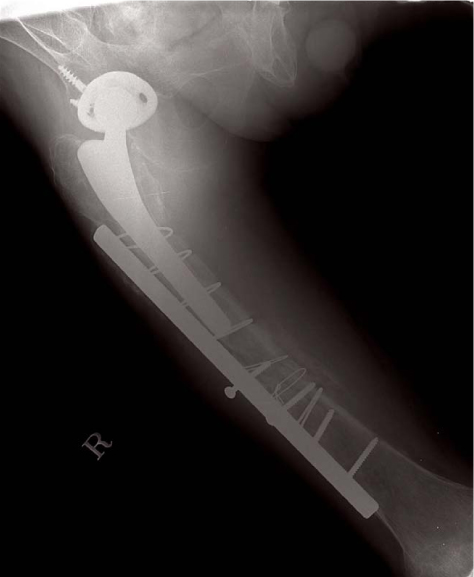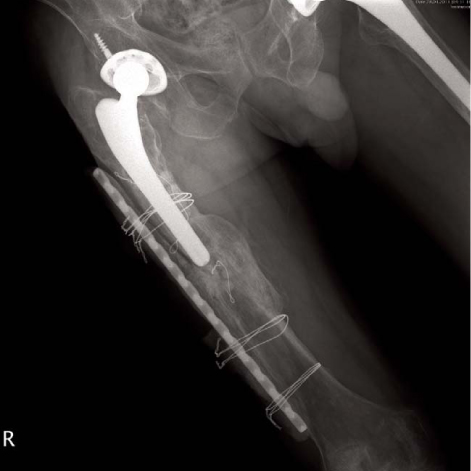Hip Pelvis.
2012 Sep;24(3):245-249. 10.5371/hp.2012.24.3.245.
Antibiotic-impregnated Cement Plate for the Treatment of Infected Periprosthetic Femoral Fracture after Cementless Total Hip Arthroplasty: A Case Report
- Affiliations
-
- 1Department of Orthopedic Surgery, Chung-Ang University College of Medicine, Seoul, Korea.
- 2Department of Orthopedic Surgery, Gangnam Himchan Hospital, Seoul, Korea. osjongwoni@hotmail.com
- KMID: 2054139
- DOI: http://doi.org/10.5371/hp.2012.24.3.245
Abstract
- A 62-year-old man with an infected periprosthetic femoral fracture, which occurred after a cementless total hip arthroplasty (THA) procedure, was treated utilizing an antibiotic-impregnated cement plate for internal fixation. Open reduction and internal fixation using a cable plate were initially attempted in his case, but a deep infection with methicillin-resistant staphylococcus epidermidis at the fracture site occurred 2 months after the initial cable plate procedure. Using an antibiotic-impregnated cement plate for internal fixation, one month later, the fracture had stabilized. Successful fusion occurred at 12 months after deploying the antibiotic-impregnated cement plate. This technique was useful in this complicated case because it facilitated the goals of eradicating infection, alleviating pain, and improving function.
Keyword
MeSH Terms
Figure
Reference
-
1. Parvizi J, Rapuri VR, Purtill JJ, Sharkey PF, Rothman RH, Hozack WJ. Treatment protocol for proximal femoral periprosthetic fractures. J Bone Joint Surg Am. 2004. 86-A:Suppl 2. 8–16.
Article2. Singh JR, Greenberg JS, Colavita P. Atypical clinical presentation of periprosthetic femur fracture after revision total hip arthroplasty. Am J Phys Med Rehabil. 2010. 89:772–775.
Article3. Park SK, Kim YG, Kim SY. Treatment of periprosthetic femoral fractures in hip arthroplasty. Clin Orthop Surg. 2011. 3:101–106.
Article4. Parvizi J, Vegari DN. Periprosthetic proximal femur fractures: current concepts. J Orthop Trauma. 2011. 25:Suppl 2. S77–S81.
Article5. Berry DJ. Epidemiology: hip and knee. Orthop Clin North Am. 1999. 30:183–190.6. Pike J, Davidson D, Garbuz D, Duncan CP, O'Brien PJ, Masri BA. Principles of treatment for periprosthetic femoral shaft fractures around well-fixed total hip arthroplasty. J Am Acad Orthop Surg. 2009. 17:677–688.
Article7. Schwab JH, Pagnano M, Haidukewych GJ, Trousdale R. A technique for treating periprosthetic fractures of the femur associated with deep prosthetic infection. J Arthroplasty. 2003. 18:211–215.
Article8. Sakai T, Ohzono K, Nakase T, Lee SB, Manaka T, Nishihara S. Treatment of periprosthetic femoral fracture after cementless total hip arthroplasty with Ilizarov external fixation. J Arthroplasty. 2007. 22:617–620.
Article
- Full Text Links
- Actions
-
Cited
- CITED
-
- Close
- Share
- Similar articles
-
- Periprosthetic Femoral Fractures after Hip Arthroplasty
- Repeated Periprosthethic Femoral Fracture in a Below Knee Amputee with Ipsilateral Cementless Total Hip Arthroplasty: A Case Report
- Fractures of the Femur associated with the Hip Arthroplasty
- Recurrent Treatment Failure in Vancouver Classification Type C Periprosthetic Fractures around a Well Fixed Short Femoral Stem
- Periprosthetic Occult Femoral Fracture: An Unknown Side Effect of Press-Fit Fixation in Primary Cementless Total Hip Arthroplasty







